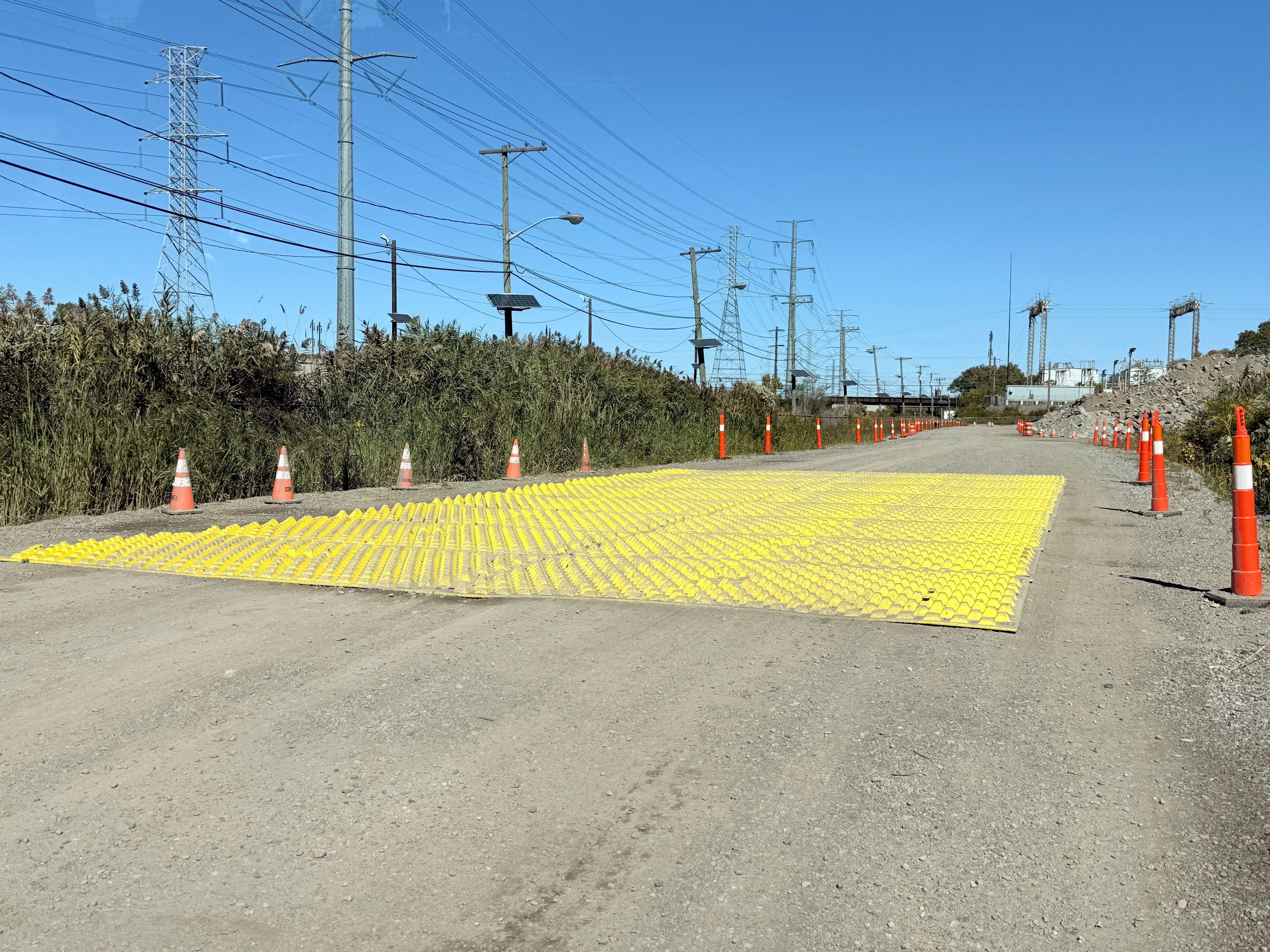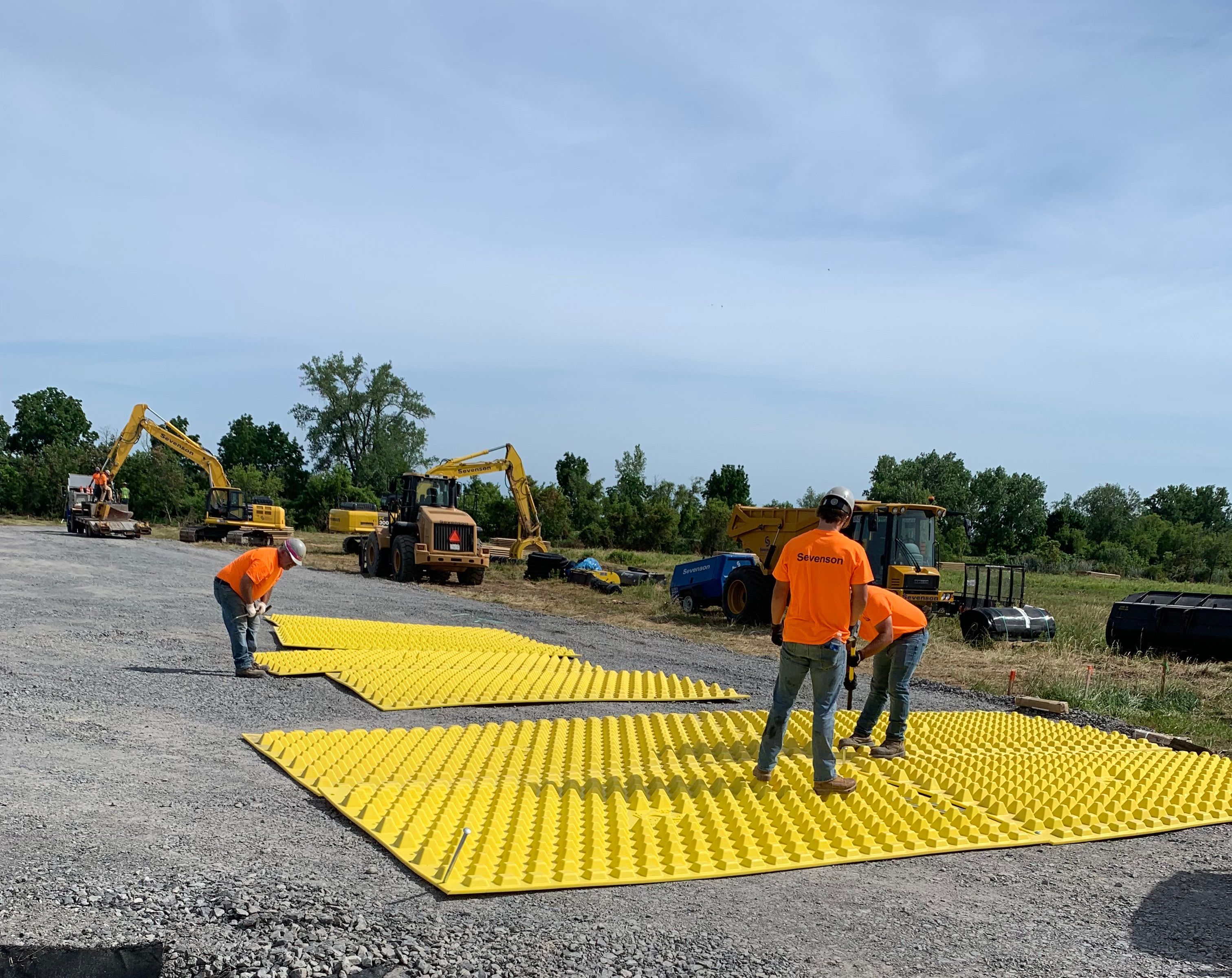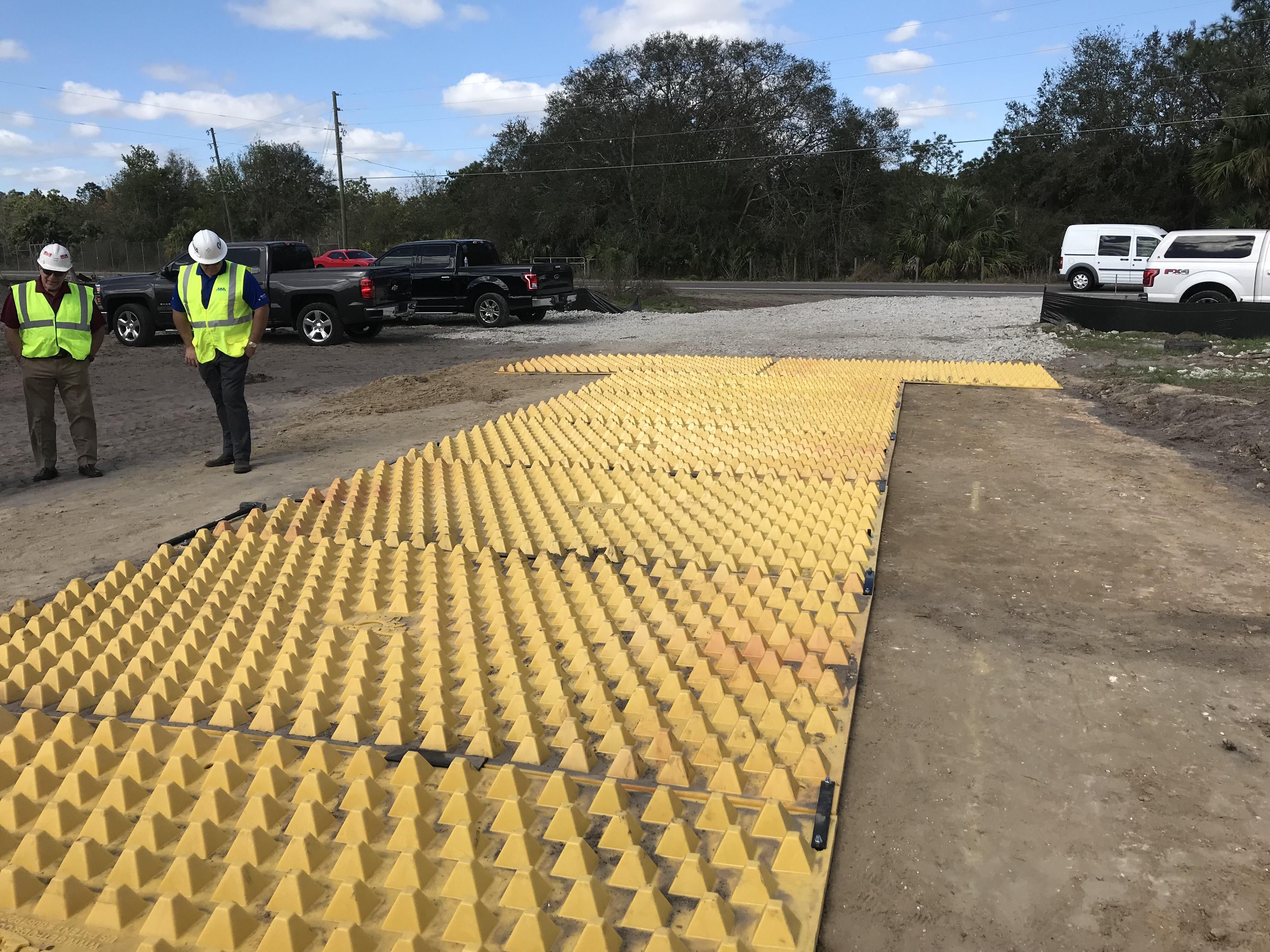Rhode Island Stabilized Construction Entrance/Exit BMP
The State of Rhode Island is the smallest state by area in the United States, yet it maintains the rank of the second most densely populated state in the country. Located on the eastern coast, the Rhode Island Sound and the Block Island Sound create the southern border of the state. The Narragansett Bay extends north from the Rhode Island Sound and is the largest estuary in the New England region. The craggy features of the Narragansett Bay create Rhode Island’s 384 miles of tidal shoreline, even though the state’s total area is only 1,214 square miles. The bay is fed by the Taunton, Blackstone, and Pawtuxet Rivers, and its system of over 30 islands is defined as a drowned river valley.
Industrial fishing is a significant industry in Rhode Island, with two ports ranked among the nation’s top 50 most productive ports. Point Judith alone recorded 53.4 million pounds of fish/shellfish in 2016 and produced $56 million of revenue. Despite the production of Rhode Island’s fishing business, the industry has seen a decline over the last several years. The revival of success in this economy is dependent on the health of Rhode Island’s ecology and is directly affected by the quality of water within its borders. Narragansett Bay has undergone nutrient-related ecological changes, which impact phytoplankton dynamics and the overall health of the marine ecosystem. All life is reliant on the quality of the local water, and it is the responsibility of the residents, industries, and government agencies to work together to protect the purity of Rhode Island’s water from pollutants.
Rhode Island RIPDES Permits
The EPA implemented the Clean Water Act (CWA) of 1972, revising the nation’s stormwater protections. The CWA regulates all water discharges to the nation’s surface waters by establishing limits, called Effluent Limitations, on pollutants and sediment that are discharged into any surface waters to prevent degradation of the water quality. To enforce erosion and sediment control practices, the CWA established the National Pollution Discharge Elimination System (NPDES) permit program, which requires municipal, industrial, and construction site operators to obtain permits before commencing activities. The permit application process requires the implementation of techniques and methods for mitigating pollution of the country’s surface water. These techniques are known as Best Management Practices (BMPs). Over time, local state authorities have assumed responsibility for administering the NPDES permit program. Rhode Island’s Department of Environmental Management administers the stormwater permit program through the Rhode Island Pollution Discharge Elimination System (RIPDES).
Operators of construction sites that disturb an area of one acre or greater must obtain permit coverage. Many construction activities can get coverage under the Construction General Permit (CGP) by developing and implementing a Soil Erosion and Sediment Control (SESC) Plan and submitting a Notice of Intent (NOI) to RIDEM. The SESC plan outlines all potential pollution sources on a job site and documents the methods and techniques that will be used to contain, minimize, or mitigate the contaminants. The RI Erosion and Sediment Control Handbook includes details about common BMPs and methods that are used to reduce pollution. The DEM publishes the Handbook, which contains examples and standards to aid contractors and engineers as they choose the BMPs that will be included in a project’s SESC plan. Notable topics in the RIESC Handbook include dust control, land grading, street sweeping, sediment traps, and sediment retention at access points.
Rhode Island Construction Entrance BMP

A necessary device for retaining sediment on-site at egress/ingress points is the construction entrance. Construction entrances are placed at every point of egress/ingress from the job site that exits onto a paved or public roadway. Sediment and other contaminants deposited on paved roadways can be easily transported into storm drains. To mitigate the discharge of sediment from the construction area by vehicles, a proper construction entrance implements an aggregate system that works to remove sediment through abrasive measures. This BMP is typically the first to be installed on a construction project before any grading or site preparation is conducted.
With any Construction Entrance BMP, ongoing maintenance is required to keep the structure in optimal performance and ensure that sediment is contained on-site. In addition to the Construction Entrance BMP, contractors use additional BMPs to address trackout, including regular street sweeping, drain covers, and sediment traps near the entrance to capture runoff. Any sediment that is tracked off the job site onto the paved roadway must be swept, vacuumed, or cleaned by the end of the day. Operators must not use water to clean the sediment, as that will cause sediment to enter storm drains. The combination of construction entrances, street sweeping, and procedural BMPs enables contractors to minimize sedimentation on job sites.
Aggregate Construction Entrance BMP
The RIESC Handbook includes an example of a traditional aggregate-based construction entrance, commonly referred to as a gravel tracking pad. The Handbook provides dimensions and guidance on tracking pad installation and maintenance. An aggregate-based Construction Entrance consists of a pad of crushed rock, which is installed at a minimum length of either 50’ or 100’ if the soil contains clay or silt. The minimum width must accommodate the turning radius of the largest construction vehicle that will be used.
A gravel layer of the construction entrance is built with rock or stone, which is a minimum of 4 inches thick and consists of ASTM C-33 No. 2 or 3 rock or RIDOT 2” crushed stone. A synthetic geotextile must be applied before the stone to protect the native soil from the gravel pad. The gravel entrance must be monitored regularly to ensure no sediment or pollutants are being tracked off-site.
Over time, the entrance will wear down and require maintenance as soil accumulates between the rocks, causing the surface to become smoother. Aggregate entrances will require top dressing with additional loads of rock to refresh the entrance and restore performance. Aggregate construction entrances will also often need repair and redressing after each rain event.

Rumble Strips and Rattle Plates BMP
When necessary, additional control methods should be used to clean vehicle tires. Rumble strips or rattle plates are typically constructed of steel, which creates a bumpy surface. The rattle plates remove additional sediment by agitating and shaking the vehicle tires as they drive over the racks. Installation and maintenance of the system typically require removing the rack and removing sediment that builds up underneath it.
Wheel Washing Rack BMP
A wash station is another technique that can be used to clean vehicle tires using pressurized water. Wheel wash stations use a platform or a shaker rack-style grate to stage vehicles as they are washed. The wash station must drain into an appropriate sediment trap or sediment basin to contain all runoff. The washing station will require a source of power and water. Many systems recycle water for repeated use and require maintenance to remove sediment that builds up in the filters.
FODS Trackout Control System BMP
The FODS Construction Entrance System is a modular, reusable BMP designed to minimize construction site track out. The system is comprised of a 12’ wide by 7’ long matting which is studded with pyramids. The pyramids create a permanent rough surface, which deforms vehicle tires, allowing sediment and soil to drop freely from the treads. The system is highly effective and contains up to 59% sediment compared to aggregate-based systems.
Compared to traditional techniques, FODS offers several benefits to site operators. The FODS system does not degrade or become compacted over time, allowing the system to be easily refreshed with a simple cleaning. FODS can be installed over any substrate, including dirt, concrete, and asphalt, making it ideal for urban projects. FODS does not require any power or water source to operate. Because the system does not use rock, there is a risk of rocks entering the roadways or being expelled from dual-tire vehicles. The system can be easily deployed in as little as 30 minutes, allowing contractors to relocate and reuse it as needed on each project. The mats are designed to be reused on multiple projects throughout their lifespan of 10 years or more.
The system is well-suited for compact work environments because the FODS system provides equal performance to rock systems over a shorter distance. A 1x5T mat configuration (35’ long) is commonly used to replace a 70’ rock entrance while providing a wide turning radius for exiting traffic. The mats offer significant savings to contractors as they can be reused, eliminating the cost of construction entrance materials.
Additional Resources
Rhode Island Erosion and Sediment Control Resources
EPA Rhode Island NPDES Permits

